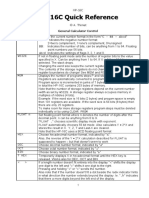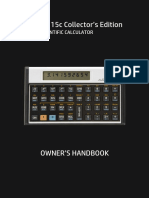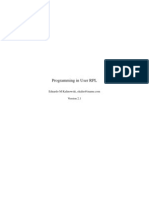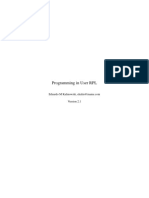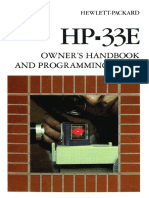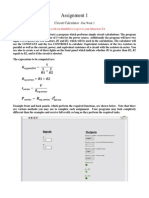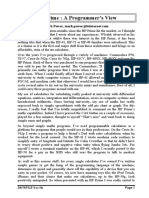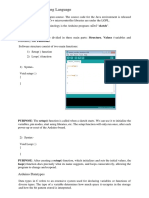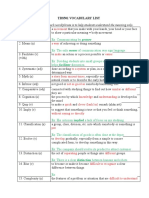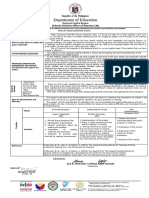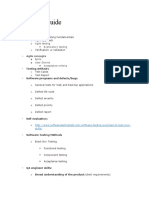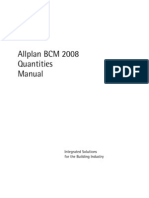0% found this document useful (0 votes)
85 views11 pagesHP30b 37programming Loops and Subs
The document provides a comprehensive guide on programming loops and subroutines using the HP 30b calculator, detailing its programming capabilities, including the creation of up to 10 programs and the use of various commands for control flow. It explains how to utilize conditional tests, GOTO commands, and looping functions like ISG and DSE, along with examples of practical applications. Additionally, it covers the use of subroutines to optimize code and the importance of program checksums.
Uploaded by
FábioCopyright
© © All Rights Reserved
We take content rights seriously. If you suspect this is your content, claim it here.
Available Formats
Download as PDF, TXT or read online on Scribd
0% found this document useful (0 votes)
85 views11 pagesHP30b 37programming Loops and Subs
The document provides a comprehensive guide on programming loops and subroutines using the HP 30b calculator, detailing its programming capabilities, including the creation of up to 10 programs and the use of various commands for control flow. It explains how to utilize conditional tests, GOTO commands, and looping functions like ISG and DSE, along with examples of practical applications. Additionally, it covers the use of subroutines to optimize code and the importance of program checksums.
Uploaded by
FábioCopyright
© © All Rights Reserved
We take content rights seriously. If you suspect this is your content, claim it here.
Available Formats
Download as PDF, TXT or read online on Scribd
/ 11







